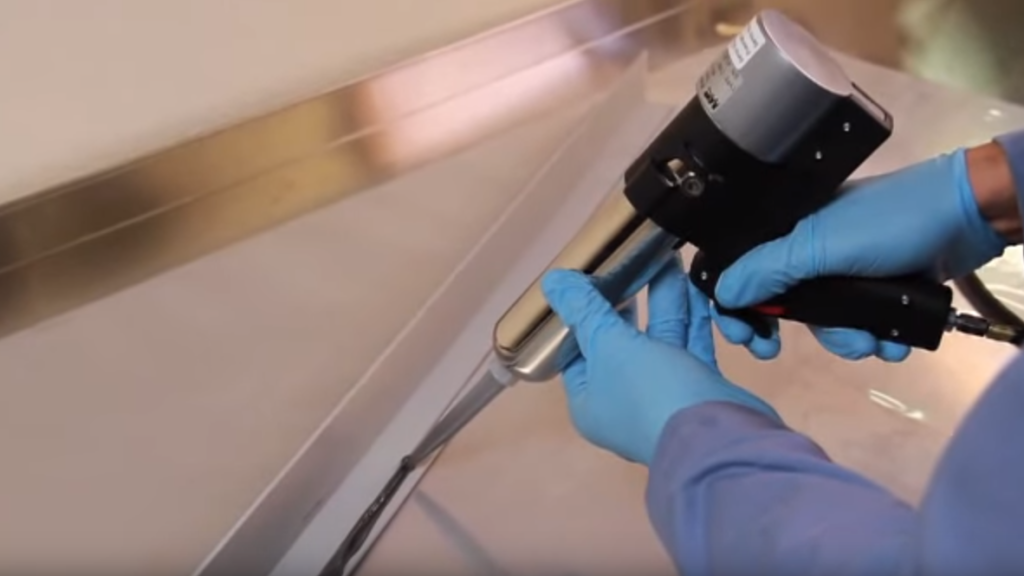By Sebastian Mora Zapata
Sealants play a crucial role in the aviation industry, ensuring airtightness, corrosion protection, and resistance to extreme conditions. From fuselages to fuel tanks, each application demands products designed to meet stringent standards. Companies like #PPGAerospace, #Naftoseal, #3M, and #Flame Master offer leading solutions that support the maintenance of #Airbus, #Embraer, and #Boeing fleets, ensuring safe and efficient operations.
Classification and Key Applications
Aviation sealants are designed to fulfill specific needs, including:
- Fuel Tank Sealants These products must withstand constant exposure to fuels like Jet A-1 and thermal expansion and contraction. They also meet high standards for chemical resistance and elasticity.
- Structural Sealants Used for fuselages, wings, and structural joints, these products ensure aerodynamic integrity, corrosion protection, and impact resistance.
- Fire-Resistant Sealants Designed for hydraulic systems and engines, they withstand high temperatures and meet fire safety regulations.
- High-Pressure Area Sealants These products ensure airtightness in critical zones like pressurized cabins and cargo compartments.
Leading Brands and Their Featured Product Lines
1. PPG Aerospace
Known worldwide, PPG offers innovative products such as the PRC Desoto line, catering to multiple aviation applications:
- 870 Line: This two-component sealant is one of the most widely used in the industry. Its formulation allows extended work time and is ideal for high-capacity fuel tanks in Boeing and Airbus aircraft. Its chemical degradation resistance makes it a standard choice in MRO (Maintenance, Repair, and Overhaul).
- PR-1422 and PR-1440: Popular for their fuel resistance and slow-curing properties, these options are ideal for areas requiring a durable and flexible finish.
2. Naftoseal
A specialist in fuel tank solutions, Naftoseal focuses on durable products like:
- Naftoseal MC-780: A lightweight sealant combining flexibility and resistance to highly corrosive fuels.
- Naftoseal MC-236: Known for its fast curing, designed for maintenance requiring minimal downtime.
3. 3M
With decades of innovation, 3M has developed products like:
- AC-770 B-2: A fast-curing sealant with high adhesion to composites and alloys, ideal for modern aircraft combining aluminum and carbon fiber.
- AC-350: Offers fire resistance, making it perfect for engine compartments and hydraulic systems.
4. Flame Master
A specialist in fire-resistant products, Flame Master excels with:
- CS 3204 B-2: Used in critical zones where extreme temperatures are common.
- CS 5306: Designed for structural applications with weather and heat resistance.
Application in Airbus, Boeing, and Embraer Fleets
Each aircraft manufacturer has specific requirements for sealant usage:
- Airbus In models like the A320 and A350, Airbus uses sealants such as MC-780 from Naftoseal and PR-1422 from PPG for their fuel tanks, ensuring integrity in long-range operations.
- Boeing In aircraft like the 737 and 787 Dreamliner, sealants from PPG’s 870 line are standard due to their ability to withstand extreme thermal variations.
- Embraer Embraer’s regional aircraft, such as the E175, require lightweight and versatile sealants. Products like 3M’s AC-770 are a perfect fit for these needs.
Common Part Numbers in Daily Aircraft Maintenance
Here are some of the most widely used part numbers in daily maintenance:
- PPG PR-1422 A-2: For sealing tanks and structural areas.
- Naftoseal MC-780 B-2: Used in fuel tank maintenance for Airbus and Embraer aircraft.
- 3M AC-770 C-2: Ideal for quick repairs on composite systems.
- Flame Master CS 3204 B-2: Heat-resistant for hydraulic systems and engines.
Aviation sealants are essential components that contribute to safety, efficiency, and compliance with industry standards. Leading brands like PPG, Naftoseal, 3M, and Flame Master offer products tailored to the specific demands of Airbus, Embraer, and Boeing. Their constant innovation ensures that aircraft operate under the most demanding conditions, minimizing maintenance costs and building trust among operators and passengers.



